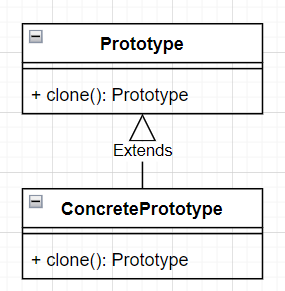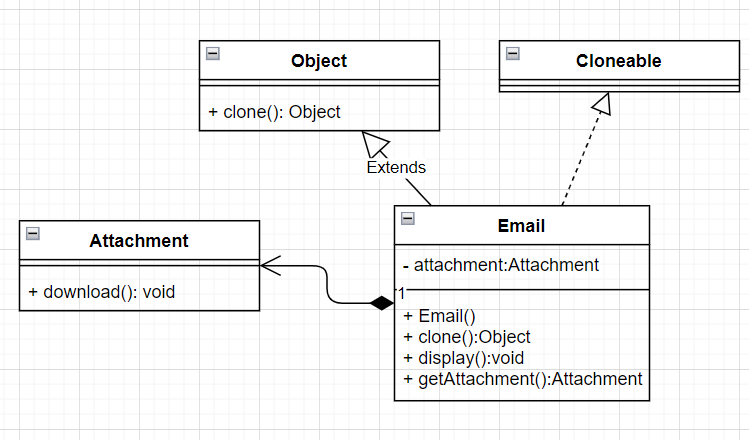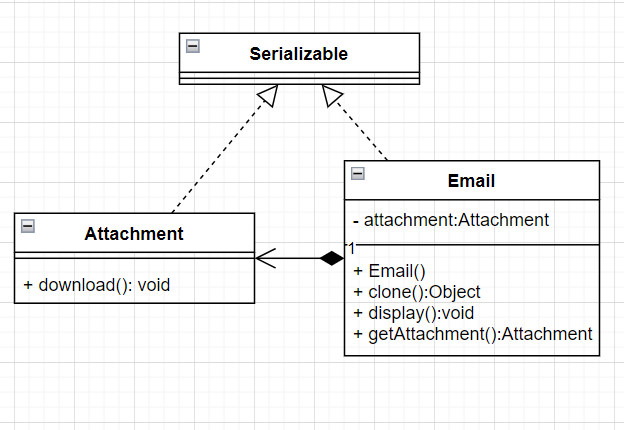一. 定义
- 当需要创建大量相同或相似对象时,且对象的创建过程较为复杂,可以只创建一个对象,然后再通过克隆的方式复制出多个相同的对象。
浅克隆:被复制对象的所有普通成员变量都具有与原来对象相同的值,而所有的对其他对象的引用扔指向原来的对象,即属性是引用对象不复制。
深克隆:被复制对象的所有普通成员变量都具有与原来对象相同的值,而所有的对其他对象的引用扔指向新的对象,即属性是引用对象复制。
二. 模式结构

1. Prototype(抽象原型类)
- 抽象原型类是定义具体克隆自己方法的接口,是所有具体原型的公共父类,可以是抽象类,也可以是接口。
2. ConcretePrototype(具体原型类)
- 具体原型类实现具体的克隆方法,在克隆方法中返回自己的一个克隆对象。
三. 实例
1. 浅克隆

①Attachment
public class Attachment {
public void download(){
System.out.println("下载附件");
}
}
②Email
public class Email implements Cloneable{
private Attachment attachment=null;
public Email() {
this.attachment=new Attachment();
}
public Attachment getAttachment() {
return attachment;
}
@Override
public Object clone() throws CloneNotSupportedException {
Email clone=(Email) super.clone();
return clone;
}
}
3. 深克隆
序列化是将对象写到流的过程,写到流中的对象是原有对象的一个拷贝,而原对象扔存在于内存,所以可以通过序列化实现深克隆。
①Attachment
import java.io.Serializable;
public class Attachment implements Serializable {
public void download(){
System.out.println("下载附件");
}
}
②Email
import java.io.*;
public class Email implements Serializable{
private Attachment attachment=null;
public Email() {
this.attachment=new Attachment();
}
public Attachment getAttachment() {
return attachment;
}
public Object deepClone() throws IOException, ClassNotFoundException {
//将对象写入流中
ByteArrayOutputStream bao=new ByteArrayOutputStream();
ObjectOutputStream oos=new ObjectOutputStream(bao);
oos.writeObject(this);
//将对象从流中取出
ByteArrayInputStream bis=new ByteArrayInputStream(bao.toByteArray());
ObjectInputStream ois=new ObjectInputStream(bis);
return ois.readObject();
}
public void display() {
System.out.println("查看邮件");
}
}
4. Client
public class Client
{
public static void main(String[] args) throws Exception
{
Email email, copyEmail;
email=new Email();
copyEmail= (Email) email.clone();
System.out.println(email==copyEmail);
System.out.println(email.getAttachment()== copyEmail.getAttachment());
}
}

